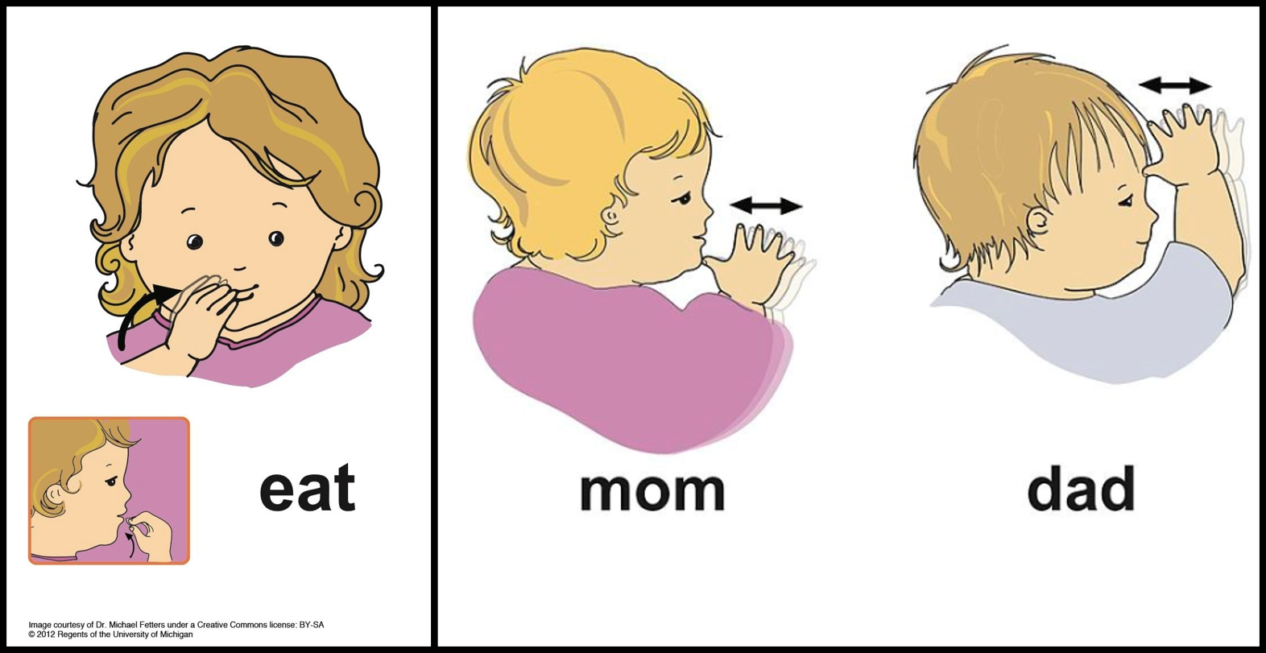How much does a word resemble what it refers to?
In languages, we use words to symbolize many things, like objects, concepts, sounds, people, actions, and anything else we might want to say! But why do certain words symbolize certain things? Why is a couch a couch? Many times, there’s no real reason!* Linguists use the term iconicity to describe how much a word resembles the thing it symbolizes, and arbitrariness to describe how much a word does not resemble the thing it symbolizes.
In sign languages, some signs are considered more iconic, like the American Sign Language (ASL) sign for “Eat”–that is, it resembles bringing food to the mouth to eat.
In contrast, the ASL signs for “Mom” and “Dad” are more arbitrary–the signs don’t look like parents!

Spoken languages also have iconicity and arbitrariness. Many words are arbitrary, like rat. The word rat symbolizes a rat but does not resemble a rat–it’s an arbitrary symbol. In spoken languages, you can find iconicity most easily in words that describe sounds: onomatopoeias. Squeak, hiss, hiccup, beep, and splash sound like the noises they symbolize.
Fun fact: the whippoorwill (right) is named after the call it makes. This is an iconic label!


*This is separate from the study of word origin (etymology). If we trace the word couch, it comes from Old French coucher (to lay something down) from Latin collocare (to place together). Neither couch, nor coucher, nor collocare actually resemble the piece of furniture in any way – it’s arbitrary!

Erin Campbell
Author
Erin is a Ph.D. student in the Bergelson lab at Duke University, where she studies how young children who are Deaf or blind learn language.